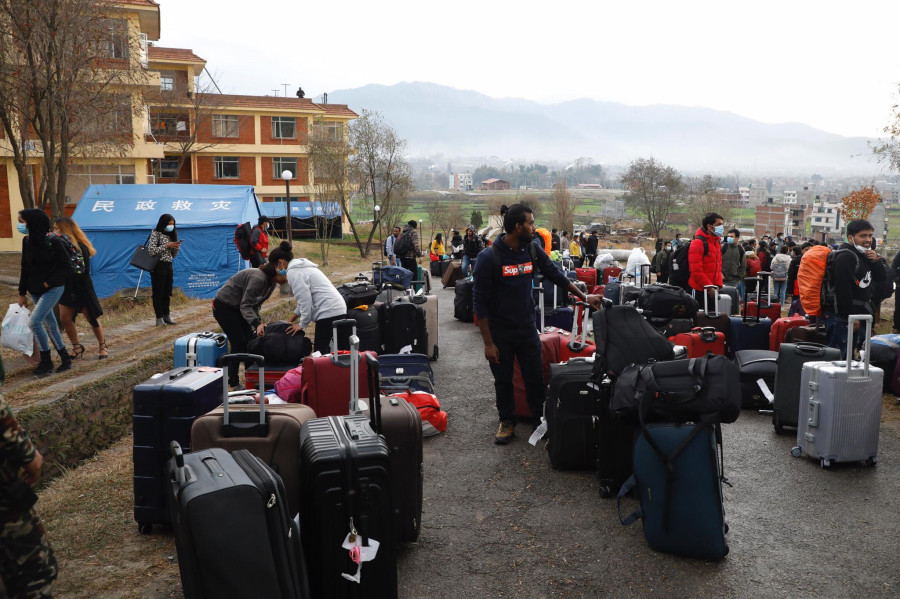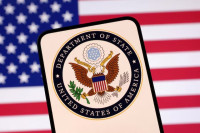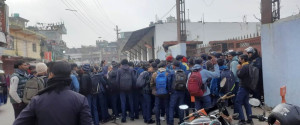National
All 175 Nepalis evacuated from Hubei Province test negative for Covid-19
18 crew members involved in the evacuation left the quarantine centre on Sunday evening after they too tested negative.
Arjun Poudel
All 175 Nepalis quarantined for the last two weeks after returning from Hubei Province of China, the epicentre of the new coronavirus outbreak, have tested negative for Covid-19, the disease attributed to the virus .
The results came two days after the National Public Health Laboratory, under the Department of Health Services, collected nasal and throat samples of the evacuees.
"All 175 who have been quarantined since their return have tested negative for coronavirus,” said Dr Bikas Devkota, spokesperson for the Ministry of Health and Population. “They can go home now. Those from within Kathmandu Valley have already started leaving. Others who are from outside the Valley will leave tomorrow.”
The health ministry also said that all 18 crew members involved in the evacuation went home on Sunday evening after they also tested negative for the disease.
The government on February 15 sent a Nepal Airlines plane to Wuhan to evacuate the Nepalis. The plane brought the Nepalis home the next day.
The 175 evacuees were taken to the Nepal Electricity Authority training centre in Khariparti, Bhaktapur, which was converted into a quarantine facility.
The 18 crew members were quarantined at the Nepal Drinking Water Corporation’s training centre, near Nagarkot.
Meanwhile, of the five people kept in isolation at the Sukraraj Tropical and Infectious Disease Hospital, Teku, two have tested negative, according to Devkota. They had visited the hospital on their own volition after developing influenza-like symptoms. Of the five, one had returned from China and the other from South Korea.
Since it was first detected in Wuhan, the novel coronavirus, now dubbed SARS-CoV-2, has spread to 69 countries. As of Monday, it has killed 3,058 infected 89,252.
While China has managed to slow down its spread, the virus has sickened people in South Korea, Italy and Iran at a faster pace, causing a global concern.
The World Health Organization, which has already declared the coronavirus outbreak a public health emergency of international concern, has raised the global outbreak risk to the highest level.
Nepal so far has reported only one case. But the government faced a barrage of criticism for its handling of the situation. This prompted health experts to say that it was only a matter of time before the outbreak came to Nepal.
After warnings from the UN health agency, the government has deployed more staffers and equipment at the health desk at Tribhuvan International Airport, the country’s only international airport.
The Department of Immigration on Monday said Nepal will stop issuing visas on arrival for citizens of China, South Korea, Iran, Japan and Italy, starting March 7. The decision will be applicable until March 30.
In the wake of the coronavirus outbreak, the government is also considering calling off Visit Nepal 2020, a campaign aimed at bringing in 2 million tourists from all over the world and at least 350,000 from China.




 5.62°C Kathmandu
5.62°C Kathmandu








%20(1).jpg&w=300&height=200)





